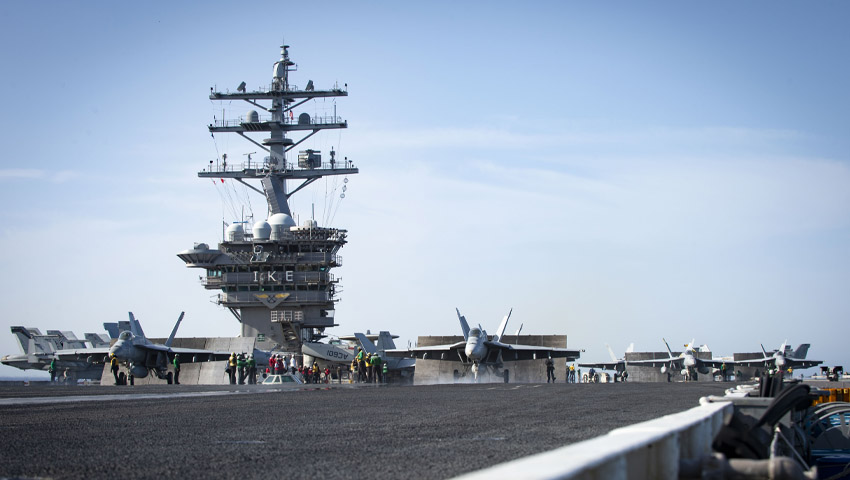Two US Navy aircraft carriers, the USS Theodore Roosevelt (CVN 71) and USS Nimitz (CVN 68) strike groups, have commenced dual carrier flight operations in the Philippine Sea following the limited carrier presence in the region during COVID.
To continue reading the rest of this article, please log in.
Create free account to get unlimited news articles and more!
The ships and aircraft assigned to both strike groups began co-ordinated operations in international waters demonstrating the US’ unique capability to operate multiple carrier strike groups in close proximity.
While at sea, the strike groups will support air defence drills, sea surveillance, replenishments at sea, defensive air combat training, long range strikes, co-ordinated manoeuvres and other exercises.
Rear Admiral Doug Verissimo, commander of Carrier Strike Group (CSG) 9, said, "This is a great opportunity for us to train together in a complex scenario. By working together in this environment, we’re improving our tactical skills and readiness in the face of an increasingly pressurised region and COVID-19."
As a Pacific nation and a Pacific leader, the US has a national interest in maintaining security and prosperity, peaceful resolution of disputes, unimpeded lawful commerce, and adherence to freedom of navigation and overflight throughout the shared domains of the Indo-Pacific.
For more than 75 years, the US Navy has been a persistent and stabilising presence conducting operations throughout the region on a daily basis.
Rear Admiral James Kirk, commander of Carrier Strike Group (CSG) 11, said, "The United States Navy has long history of operating multiple carrier strike groups as a combined force in the Pacific.
"Our operations demonstrate the resilience and readiness of our naval force and are a powerful message of our commitment to regional security and stability as we protect the critically important rights, freedoms, and lawful uses of the sea for the benefit of all nations."
US Navy aircraft carriers have conducted dual carrier strike group operations in the western Pacific, including the South China Sea, East China Sea and Philippine Sea, for several years.
These operations typically occur when strike groups deployed to the 7th Fleet area of operations from the west coast of the US are joined with the forward deployed carrier strike group from Japan.
RADM Verissimo added, "Working with RADM Kirk and Carrier Strike Group 11 during their deployment is a great opportunity for us to train on how we would operate multiple carrier strike groups in a contested environment.
"US aircraft carriers possess flexibility, endurance, firepower, manoeuvrability and capability unmatched in the history of warfare."
CSG 11 consists of the aircraft carrier USS Nimitz (CVN 68), guided-missile cruiser USS Princeton (CG 53) and guided-missile destroyers of Destroyer Squadron (DESRON) 9, which includes USS Sterett (DDG 104), USS Ralph Johnson (DDG 114) and Carrier Air Wing (CVW) 17.
CSG 9 consists of the aircraft carrier USS Theodore Roosevelt (CVN 71), guided-missile cruiser USS Bunker Hill (CG 53) and guided-missile destroyers from Destroyer Squadron (DESRON) 23, USS Russell (DDG 59), USS Rafael Peralta (DDG 115), and Carrier Air Wing (CVW) 11.
Theodore Roosevelt departed San Diego for a scheduled Indo-Pacific deployment on 17 January, while Nimitz departed on 8 June.
Stephen Kuper
Steve has an extensive career across government, defence industry and advocacy, having previously worked for cabinet ministers at both Federal and State levels.

 Login
Login








